A Busy Two Weeks Ahead For The Supreme Court And Supreme Court Watchers
With two more weeks to go, there are plenty of "big" cases still awaiting the release of a decision.
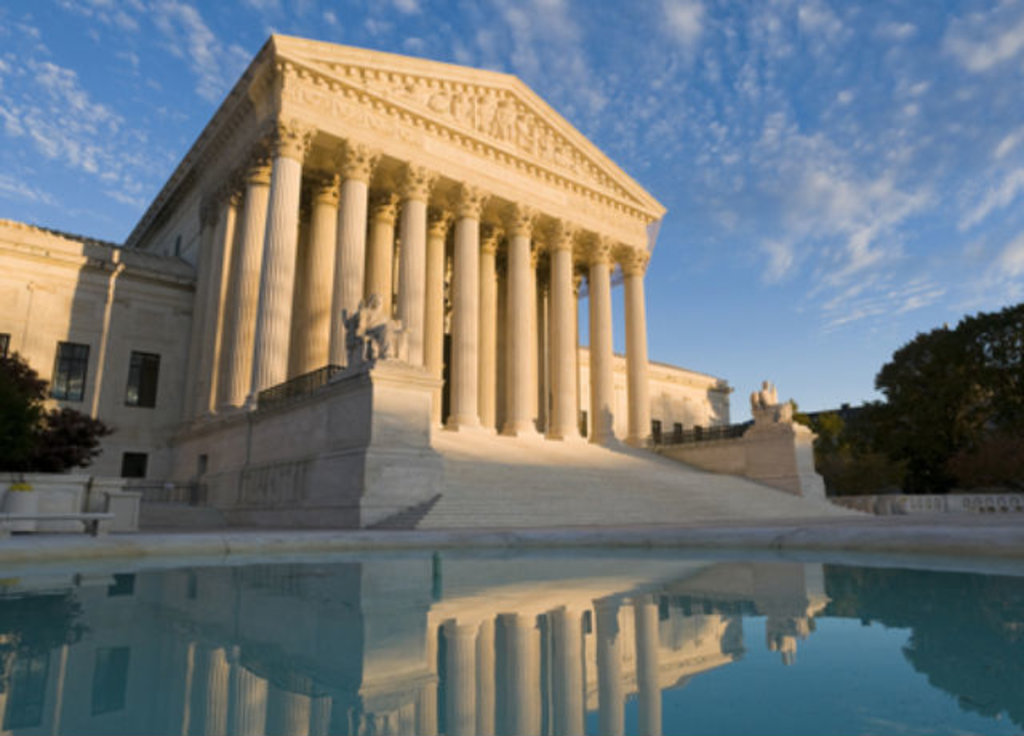
Within the next two weeks, the Supreme Court will hand down the remainder of the decisions that are still pending from the arguments it has heard over the course of the term that began back in October. Since I last looked at the status of the Court’s docket this term, we’ve seen a number of high profile decisions handed down, including a few that many Court observers though we may not see until the end of this term. Notwithstanding that, though, there are currently enough major and minor cases still pending before the Court to ensure that the next two weeks are likely to be quite busy for Court watchers, and for the Justices who are writing the opinions and dissents in the cases that have yet to be released to the public. Since there have been several changes in the list that I posted two weeks ago, it’s worth taking a look at what’s still out there and what we can expect over the next two weeks.
Here are the major cases that have been decided since the last update:
- In Collins v. Virginia, the Court ruled that police cannot enter a person’s property and search an automobile, in this case, a motorcycle that was covered by a tarp, without a search warrant supported by probable cause. I covered the decision in the post at this link.
- In Masterpiece Cakeshop v. Colorado Civil Rights Commission, a highly anticipated case that involved a discrimination claim against a Denver baker who refused to bake a cake for a same-sex wedding, the Court handed down a 7-2 ruling that, despite the margin for the baker, was clearly and perhaps purposely narrowly tailored. Generally speaking, the Court ruled in favor of the baker but limited the basis for its ruling to facts on the record in that case that showed that the commission did not give the baker’s religious liberty claims sufficient consideration and demonstrated bias against him before handing down a decision. As a result, it’s unclear where the law stands regarding the conflict between anti-discrimination laws, LGBT rights, and the interests of states and localities in enforcing their laws against discrimination by businesess that hold themselves out as being open to the general public. You can read my post on this decision at the link.
- In Husted v. A. Philip Randolph Insitute, the Court upheld the validity of a provision of Ohio law that has been in existence for the past two decades that allows the Ohio Secretary of State to remove individuals from the ballot if they have not voted in an election, have failed to respond to a mailed notice meant to verify their address, and have failed to vote in four subsequent elections. You can read James Joyner’s post on the decision at the link.
- In Minnesota Voters Alliance et al v. Mansky et al, the Court struck down a Minnesota law banning “political apparel” at polling places, primarily on the ground that it was vague and gave far too much arbitrary discretion to polling place administrators, thus violating the First Amendment. You can read my post on the decision at the link.
As for the cases that remain to be decided, this includes cases where the Court is being asked to rule on major voting rights issues, political gerrymandering, the application of the Fourth Amendment to new technology, the First Amendment, and the scope of Presidential authority in the case involving President Trump’s travel ban that primarily impacts majority Muslim countries:
Political Gerrymandering
One of the major themes that the Court dealt with this term has centered on the issue of voting rights generally, and the manner in which Congressional and state legislative districts are drawn in particular. In the second category, the Court has heard two major cases dealing with the issue of partisan gerrymandering, in which districts are created for the purpose of protecting partisan interests and making it more difficult for opposing parties to challenge incumbents. The first case, Gil et al v. Whitford et al, arises out of Wisconsin and concerns the entire state map, which the Plaintiffs in the case contend was unfairly drawn to benefit Republicans. Among the primary pieces of evidence that the Plaintiffs relied upon in support of their arguments was a somewhat complex mathematical algorithm that purports to find that Wisconsin’s Congressional districts are far more heavily biased in favor of the GOP than should be expected if the district lines were drawn with geographic contiguity and other concerns in mind.
The second case is titled Benisek et al v. Lamone et al and deals with how the lines for a single Congressional District in western Maryland were drawn after the 2010 census. This district had been previously represented by Republican Congressman Roscoe Bartlett but fell into Democratic hands after Bartlett was defeated in 2012 by current Congressman John Delaney in no small part due to the fact that the partisan makeup of the district had become far more Democratic than it was in the past. The Plaintiff’s in Benisek contend that this was done to limit Republican representation in Maryland’s Congressional District.
As I noted when I wrote about the oral argument in both Gil on the first day of the term in October and in Benisek in March, the Justices appeared divided on the issue of the extent to which Courts should involve themselves in trying to limit the authority of state legislatures to craft legislative districts. As expected, the pivotal vote in these cases is expected to be Justice Anthony Kennedy, who has been sympathetic to arguments such as this in the past but who is also clearly concerned about the idea of the judiciary getting deeply involved in the redistricting process, which would likely be the inevitable result of a decision that was a far-reaching as what these respective Plaintiffs are asking for.
Racial Gerrymandering
In addition to the two cases dealing with partisan redistricting, the Court also heard oral argument in an area in which the courts have far more experience, the question of when redistricting that appears to have a racial impact can be permitted under the Constitution and under the Voting Rights Act. This case is Abbott et al v. Perez et al and deals with two Congressional Districts in Texas that the Plaintiffs contend are drawn in a way to minimize the voting power of minorities. The allegations are specifically alleged with respect to the 27th Congressional District and the 35th Congressional District. The 27th District is currently vacant but was previously represented by former Republican Congressman Blake Farenthold, who resigned due to allegations of sexual impropriety earlier this year. The 35th District, meanwhile, is a newly created district that is presently represented by Democratic Congressman Lloyd Doggett. The 37th District Has been criticized as one of the most extreme examples of Gerrymandering in the United States. If the Court decides for the Plaintiffs, it could mean that the Texas legislature would be required to redraw all of the districts for the state.
As I noted when I wrote about the oral argument in this case, this once again appears to be a case where Justice Kennedy will end up being the deciding vote. As with the partisan gerrymandering cases, it’s unclear from the oral argument which way the Court is leaning, but it seems likely that the Plaintiffs here may have more luck before the Court than the Plaintiffs in Gill or Benisek given the already existing precedent on this issue. Notwithstanding that fact, though, we won’t know for sure until the decision is handed down.
Technology and the Fourth Amendment
In Carpenter v. United States, the Court is being asked to decide whether police are required to obtain a search warrant before they obtain data from a cellphone company that would allow them to track an individual’s movements over a period that could last for days or weeks. This is particularly relevant in the modern era given the fact that virtually all phones come with technology that not only makes it possible to use cell phone tower location to determine someone’s location, but also has a connection to the Global Positioning System that uses satellite data that can typically provide an exact location for the phone in question and, most probably, its user. The defendant in this case, as well as privacy advocates on both sides of the aisle, argue that a search warrant is required, and some states such as California already have laws that require a warrant in these situations for state and local law enforcement. Law enforcement authorities, on the other hand, argue that they need the data in what has become an increasingly complex criminal world. In the oral argument in this case in November, the Justices appeared skeptical of the government’s argument in favor of the idea that no warrant should be required, but they also appeared at least somewhat unsure of the Defendant’s position that a warrant should be required in all circumstances.
State Taxation Of Internet Sales
One of the biggest issues that has arisen with the expanding scope of sales over the Internet has been the extent to which states can require out-of-state sellers to collect sales taxes on merchandise shipped to people residing in their borders. At the present time, the state of the law is controlled by two decisions that stretch back to well before the Internet existed. The first decision was handed down in 1967 in National Bellas Haas v. Department of Revenue. In that case, the Court ruled that a mail-order catalog business was not required to collect sales tax on behalf of states in which it does not have a physical presence. Twenty-six years later, the Court ruled in 1993 in Quill Corp. v. South Dakota in a manner that somewhat overruled the central holding of Bellas Haas but did not completely throw the precedent out. Specifically, the Quill ruling still established that the Commerce Clause prevented states from requiring businesses without an in-state physical presence from collecting sales taxes. Now, the Court is being asked to revisit that issue.
In South Dakota v. Wayfair, Inc., the Court is being asked to revisit its decisions in Bellas Haas and Quill in the light of the rise of the Internet as a huge market for interstate commerce. The Court heard oral argument in the case in April, and by the end of the hearing, it was entirely unclear where the Court might come down on this issue. On the one hand, many Justices appeared sympathetic to the idea that the court’s earlier precedents simply don’t make sense in the modern era. On the other, there was some proper concern over the question of the extent to which a broad ruling in favor of the states could impact a wide variety of issues arising under the Interstate Commerce Clause. As a result, it’s entirely unclear where the Court will end up in this case.
Abortion And The First Amendment
In National Institute of Life and Family Advocates Et Al v. Becerra Et Al, the Justices are being asked to deal with a challenge to a California law that requires Crisis Pregnancy Centers, which are generally run by religious pro-life groups, to provide information about abortion even if they don’t provide them or refer clients to physicians who perform them. The Plaintiffs in the case contend that this law is a violation of the First Amendment in that it is a form of “forced speech” by the state, while California counters that the law is simply meant to ensure that women get the information they need to make an informed decision. During oral argument of this case in March, the Justices appeared to be skeptical of the state’s arguments and appeared ready to strike down the law. The interesting thing to see about this case, then, will likely be to see how the Court’s liberals, who are generally protective of abortion rights, end up going in this case given the obvious First Amendment concerns.
Trump Travel Ban
In Trump v. Hawaii, the Court is being asked to review a ruling from the Ninth Circuit Court of Appeals that struck down the third and final iteration of the travel ban that the Trump Administration had put in place shortly after Inauguration Day. The history behind this ban is well known, so I won’t repeat it here. As it stands, though, it appears clear from the oral argument that the Court heard near the end of April that the challengers could be on the verge of being handed a defeat, or that at the very least the Court is likely to rule that the President does have the authority under the law to ban people from specific countries if he deems it to be necessary for national security. What will be interesting to see is whether the Justices deal with the issue of whether or not the President’s tweets and campaign statement, as well as the statements made by advisers and supporters, can properly be considered by Courts in situations such as this.
Public Sector Unions
In Janus v AFSCME et al, the Court is being asked to once again examine an issue that it heard prior to the death of Justice Scalia but was unable to issue a conclusive opinion due to the fact that he had died prior to the time the decision was handed down. At the heart of the case is the Court’s ruling in a 1977 case styled Abood v. Detroit Board of Education in which the Court essentially legalized the “closed shop” for public sector employees, meaning that an employee for a local, state, or Federal agency or department could be required to join a union and pay dues as a condition of employment. For years, critics of forced unionization sought to overturn Abood, but it has only been with the rise of the current largely conservative Supreme Court that they have been successful in their efforts.
That opportunity came in the October 2015 term in Friedrichs v. California Teacher’s Association, which the Court accepted for review at the end of its October 2014 Term. When the Court heard the case in January 2016, it appeared that there was at least a 5-4 majority ready to overturn Abood and rule the collection of mandatory union dues unconstitutional. Within a month after oral argument, though, Justice Antonin Scalia died and the Court was left with a split that ended in a 4-4 ruling that allowed the Ninth Circuit Court of Appeals decision upholding the fees to stand but left both sides of the debate somewhat disappointed at the lack of a final resolution of the matter. Now, with the Janus case and the presence of Justice Gorsuch on the Court, the fate of public sector employee unions appears to be rather grim.
When the Court heard oral argument in Janus back in February, the conservative majority, including Justice Kennedy, appeared to be united in the position that the Abood ruling was flawed and that the First Amendment barred public employee unions from requiring employees to pay dues to keep their jobs. As I’ve said before, it’s fairly well-settled law, that people cannot be forced to subsidize speech they disagree with, and as the court’s conservative Justices noted in their questioning, the argument that there can be a distinction between public advocacy and contract negotiation in a public employee context simply doesn’t make any sense. Given this, a public employee who is compelled to pay union dues as a condition of employment is being compelled to subsidize speech whether they want to or not. This would seem to be a clear violation of the First Amendment.
And finally……
No discussion of the end of the current Court would be complete without some speculation about potential Supreme Court retirements. At present, there are two Justices over the age of eighty, Justices Ruth Bader Ginsburg (85) and Justice Anthony Kennedy (81), and one Justice, Stephen Breyer, who will turn eighty before the start of the Court’s next term. For obvious reasons, it’s unlikely that either Justice Breyer or Justice Ginsburg would leave the Court voluntarily while Donald Trump is President and the Republicans control the Senate. That means all eyes are turned, as they were last year, on Justice Kennedy, who has been the swing vote in most of the Court’s major decisions ever since Justice Sandra Day O’Connor retired during the Bush Administration. Kennedy has been on the Court since February 1988 and is currently the longest-serving Justice on the Court. Kennedy has been at the center of retirement rumors for two years now and has given no indication of his intentions so far. Given his frequent role as the balance between the Court’s liberal and conservative wings, a Kennedy resignation would be hugely consequential for the future direction of the Court.
Another potential retirement that some in Washington have whispered about is Justice Clarence Thomas, who is still relatively young at 69, will turn 70 before the current term ends, and, many have suggested, could be at the point where he’d like to spend his remaining years with his wife and family. At the same time, Thomas is the second-longest serving Justice on the Court and would become the “Dean” of the Court if Kennedy retires, a position that would place him just below the Chief Justice when it comes to assigning opinions after the Justices have voted on a case. The remaining Justices range in age from Justice Alito at 68 and Justice Gorsuch, who just turned 50 this year and it seems unlikely that any of them will be stepping aside any time soon. So far, there hasn’t been a peep about retirements this year, and the rumors about Kennedy aren’t nearly as common as they were a year ago. Whether or not we’ll see someone step aside is something we won’t know until the gavel sounds on the final day of the term later this month.

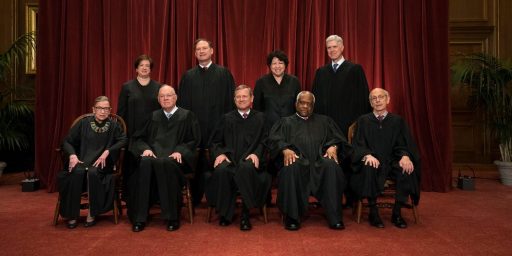
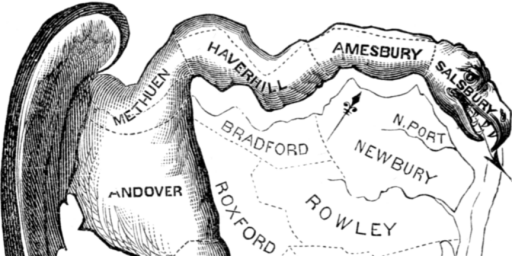
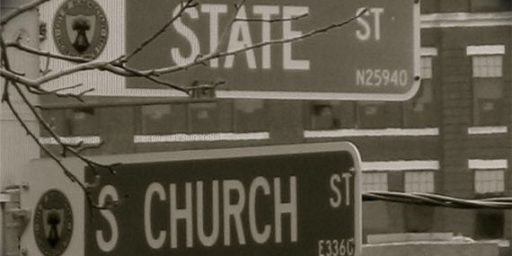

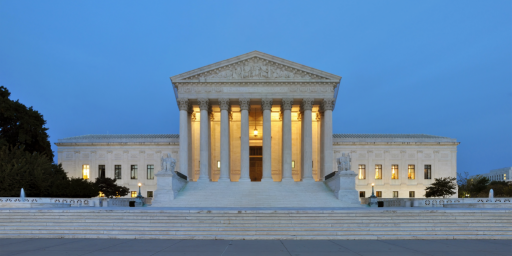
Commercial negotiation in labor contracts have always been commercial speech subject to labor regulation like other commercial speech. That it is political speech is a novelty in first amendment law of very recent vintage pushed by wealthy interests who are against teacher’s unions including one sitting centimillionaire Governor.
Though it must be said, he won’t be governor for much longer
@Zenpundit:
The issue in Janus relates to public employee unions for government employees, this is why the First Amendment even applies in the first place.
@Zenpundit:
He has $10,000?
😛
/Pedant
“Purports”?
Like a thermometer purports to show the temperature?
And they basically punt on Gill and Benisek.
Gill (7-2, CJ Roberts with the opinion) – recognized partisan gerrymandering as an issue Courts can and should give relief on but question harm of plaintiffs as it impacts standing because they didn’t present evidence of this. That said, opens up a fairly clear path to success on a district by district basis.
Benisek was more easily disposed on timeliness of request for preliminary relief.